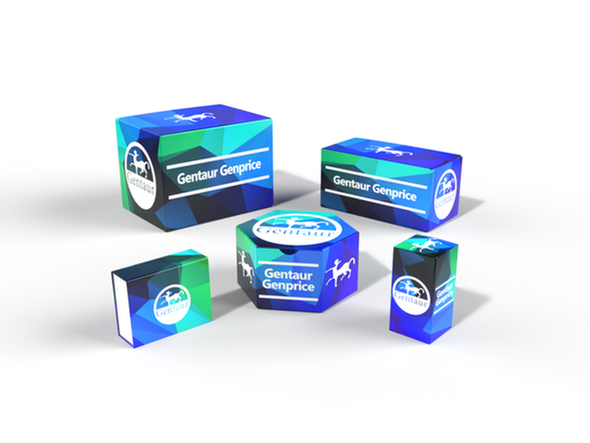LBD
Podoplanin / GP36 / T1A-2 Antibody (N-term) [APR04524G]
- SKU:
- LBD-APR04524G
- Availability:
- Usually ships in 5 working days
Description
Podoplanin / GP36 / T1A-2 Antibody (N-term) [APR04524G] | Gentaur UK, US & Europe Distribution
Product Category: Polyclonal Antibodies
Host: Rabbit
Species Reactivity: H
Specificity: This Podoplanin / GP36 / T1A-2 antibody is generated from rabbits immunized with a KLH conjugated synthetic peptide between 33-63 amino acids from the N-terminal region of human Podoplanin / GP36 / T1A-2.
Cellular Localisation: [Podoplanin]: Membrane; Single-pass type I membrane protein {ECO:0000250|UniProtKB:Q62011}. Cell projection, lamellipodium membrane; Single-pass type I membrane protein {ECO:0000250|UniProtKB:Q62011}. Cell projection, filopodium membrane; Single- pass type I membrane protein {ECO:0000250|UniProtKB:Q62011}. Cell projection, microvillus membrane; Single- pass type I membrane protein {ECO:0000250|UniProtKB:Q62011}. Cell projection, ruffle membrane; Single-pass type I membrane protein {ECO:0000250|UniProtKB:Q62011}. Membrane raft. Apical cell membrane. Basolateral cell membrane. Cell projection, invadopodium. Note=Localized to actin-rich microvilli and plasma membrane projections such as filopodia, lamellipodia and ruffles (By similarity) . Association to the lipid rafts is required for PDPN-induced epithelial to mesenchymal transition (EMT) (PubMed:21376833) . Colocalizes with CD9 in tetraspanin microdomains (PubMed:18541721) . Localized at invadopodium adhesion rings in tumor cell. Association to the lipid rafts is essential for PDPN recruitment to invadopodia and ECM degradation (PubMed:25486435) {ECO:0000250|UniProtKB:Q62011, ECO:0000269|PubMed:18541721, ECO:0000269|PubMed:21376833, ECO:0000269|PubMed:25486435}
Molecular Weight: 16698
Clone: Polyclonal
Gene Name: PDPN {ECO:0000312|EMBL:AAH14668.2}
Gene ID: 10630
Function: Mediates effects on cell migration and adhesion through its different partners. During development plays a role in blood and lymphatic vessels separation by binding CLEC1B, triggering CLEC1B activation in platelets and leading to platelet activation and/or aggregation (PubMed:14522983, PubMed:15231832, PubMed:17616532, PubMed:18215137, PubMed:17222411) . Interaction with CD9, on the contrary, attenuates platelet aggregation induced by PDPN (PubMed:18541721) . Through MSN or EZR interaction promotes epithelial- mesenchymal transition (EMT) leading to ERZ phosphorylation and triggering RHOA activation leading to cell migration increase and invasiveness (PubMed:17046996, PubMed:21376833) . Interaction with CD44 promotes directional cell migration in epithelial and tumor cells (PubMed:20962267) . In lymph nodes (LNs), controls fibroblastic reticular cells (FRCs) adhesion to the extracellular matrix (ECM) and contraction of the actomyosin by maintaining ERM proteins (EZR; MSN and RDX) and MYL9 activation through association with unknown transmembrane proteins. Engagement of CLEC1B by PDPN promotes FRCs relaxation by blocking lateral membrane interactions leading to reduction of ERM proteins (EZR; MSN and RDX) and MYL9 activation (By similarity) . Through binding with LGALS8 may participate in connection of the lymphatic endothelium to the surrounding extracellular matrix (PubMed:19268462) . In keratinocytes, induces changes in cell morphology showing an elongated shape, numerous membrane protrusions, major reorganization of the actin cytoskeleton, increased motility and decreased cell adhesion (PubMed:15515019) . Controls invadopodia stability and maturation leading to efficient degradation of the extracellular matrix (ECM) in tumor cells through modulation of RHOC activity in order to activate ROCK1/ROCK2 and LIMK1/LIMK2 and inactivation of CFL1 (PubMed:25486435) . Required for normal lung cell proliferation and alveolus formation at birth (By similarity) . Does not function as a water channel or as a regulator of aquaporin-type water channels (PubMed:9651190) . Does not have any effect on folic acid or amino acid transport (By similarity) .
Summary: Tissue Location: Highly expressed in placenta, lung, skeletal muscle and brain. Weakly expressed in brain, kidney and liver. In placenta, expressed on the apical plasma membrane of endothelium. In lung, expressed in alveolar epithelium. Up-regulated in colorectal tumors and expressed in 25% of early oral squamous cell carcinomas
Form: Purified polyclonal antibody supplied in PBS with 0.09% (W/V) sodium azide. This antibody is purified through a protein G column, eluted with high and low pH buffers and neutralized immediately, followed by dialysis against PBS.
Storage: Maintain refrigerated at 2-8°C for up to 2 weeks. For long term storage store at -20°C in small aliquots to prevent freeze-thaw cycles.
Application: WB
Dilution: WB--1:1000
Synonyms: Podoplanin, Aggrus, Glycoprotein 36, Gp36, PA226 antigen, T1-alpha, T1A, PDPN {ECO:0000312|EMBL:AAH146682}

![Podoplanin / GP36 / T1A-2 Antibody (N-term) [APR04524G] Podoplanin / GP36 / T1A-2 Antibody (N-term) [APR04524G]](https://cdn11.bigcommerce.com/s-1rdwiq712m/images/stencil/608x608/products/57456/57760/gentaur-genprice__26005.1661610467__29809.1661628092__75433.1661676199__77988.1661684280__64362.1661692443__54943.1661854008.png?c=1)


![Podoplanin Antibody [5E2] Podoplanin Antibody [5E2]](https://cdn11.bigcommerce.com/s-1rdwiq712m/images/stencil/590x590/products/485705/491534/gentaur-genprice__26005.1661610467__29809.1661628092__75433.1661676199__77988.1661684280__64362.1661692443__02085.1662049603__45075.1662119302__91744.1662191540__21580.1662291419__36480.1663499075.png?c=1)

